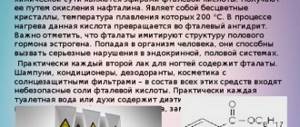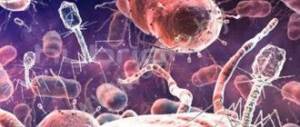It is obvious that electronic cigarettes are gaining more and more popularity. Today you can see a huge number of people, including very young people, with electronic cigarettes or vapes in their mouths.
Proponents of electronic inhalers say they are safe to use. They say that, unlike a cigarette, the vapor does not contain combustion products, and nicotine is completely harmless. There are those who believe that it is even beneficial for our body.
In the “Easy Way” course, you can sometimes hear the phrase from participants: “How soon will the body start producing its own nicotine?” - such questions arise due to ignorance.
Therefore, we suggest you figure it out:
- What is nicotine?
- How does nicotine work?
- How does addiction form and what is the effect on the body?
- How does nicotine withdrawal occur?
- Why is it difficult to quit smoking?
- And the most important question is how to quit smoking easily?
Take the test and find out in a minute whether it will be easy for you to quit smoking
Take the test
general characteristics
So nicotine is an alkaloid found in plants of the nightshade family. The largest amount of this substance is found in tobacco, but there are 66 other crops that contain it to a lesser extent. Nicotine is found in small quantities even in vegetables such as tomatoes, bell peppers, potatoes and eggplant.
In dry tobacco, nicotine can range from 0.3 to 5% by weight. Its biosynthesis occurs in the roots, and accumulation occurs in the leaves. Nicotine is a colorless, oily liquid. It boils at a temperature of 247.6 °C and darkens very quickly when exposed to air. At temperatures of 60-210 °C, nicotine is partially dissolved in water. And at temperatures below 60 and above 210 °C it mixes well with water.
The name "nicotine" appeared in honor of Jean Nicot, who was the French ambassador to the Portuguese court. In 1560, he sent Queen Catherine de Medici some tobacco as a remedy for migraines. In addition to migraines, they treated rheumatism, asthma, toothache and wounds.
Nicotine and humanity
People have been smoking since time immemorial. The world history of tobacco goes back more than a thousand years. In Russia, for example, tobacco appeared only under Ivan the Terrible. The active fight against nicotine addiction began only at the end of the last century. And so far, an unhealthy lifestyle is winning, taking away more and more people. The huge army of smokers brings profit to tobacco companies. And even despite all the measures taken by healthcare organizations, in most countries tobacco remains the most common and accessible drug.
Introduction
to top
Salt nicotine is a type of nicotine that has been known for quite a long time, but it attracted the attention of vapers only in 2015, and in Russia it became popular closer to 2020.
This substance is also called nicotine salts, mono-protonated or saltbase nicotine. All terms are equivalent, but the name “salt” or “saline” is more ingrained in the community.
Nicotine use
Nicotine is consumed in three ways: smoking, chewing and inhaling tobacco. The substance tends to be quickly absorbed through the mucous membranes of the mouth, food canal and lungs. In addition, nicotine can enter the body through the skin, even intact skin. Once in the body, the substance spreads very quickly through the blood. 7 seconds after inhaling tobacco smoke, it enters the brain. Nicotine leaves the body to some extent for at least two hours. In general, only a small fraction of the nicotine contained in tobacco leaves is inhaled when smoked. The fact is that the main part of the substance burns. The amount of poison adsorbed when smoking depends on the type of tobacco and the presence of a cigarette filter. When chewing or snorting special tobacco, much more nicotine enters the body.
Airways
Tobacco smoke is the main cause of the development of nonspecific respiratory diseases. The constant supply of nicotine damages the mucous membranes of the trachea, pharynx, bronchi, and bronchioles . The alveolar walls lose their elasticity, become rough and swell. Why is nicotine harmful? A person who smokes is more likely to develop:
- Chronical bronchitis;
- bronchial asthma;
- laryngitis, pharyngitis, tracheitis.
Separately, it is worth highlighting the chronic cough of a smoker. A significant amount of toxic compounds and toxic resins accumulate in the human body per day.
As soon as he gets out of bed, the smoker begins to cough violently. In this way, the respiratory tract is cleansed of harmful substances. The cough subsides only by noon and starts again in the morning. If a person decides to get rid of a bad habit, his lungs will clear only after a few months.
The effect of nicotine on the lungs is extremely negative. Under its influence, emphysema can develop, a pathological condition characterized by unnatural expansion of the lungs . Each cigarette smoked reduces their functional activity, and this seriously increases the likelihood of tuberculosis. Nicotine damages the vocal cords, leading to hoarseness and hoarseness.
Consequences
Once in the body, the substance affects acetylcholine receptors. In small concentrations it activates receptor activity. This leads to an increase in the level of the hormone adrenaline in the blood. The release of adrenaline speeds up the heart rate, increases blood pressure, quickens breathing and increases blood glucose levels.
To the question of whether nicotine is harmful, the answer is simple: it is certainly harmful. Although in our time it is unlikely that anyone will doubt this. In general, nicotine is a real poison. It severely affects both the central and peripheral nervous systems. The substance has a particularly strong effect on the ganglia of the autonomic nervous system. In this regard, it belongs to the class of so-called ganglinary poisons. Large doses of nicotine entering the body depress and paralyze the nervous system, and also stop breathing, which soon leads to cardiac arrest. The average lethal dose for humans is 0.5-1 mg/kg.
Despite its strong toxicity, in small doses nicotine acts as a psychostimulant. It affects mood differently for different people. By causing the release of adrenaline and glucose, the poison excites the entire body. From a subjective point of view, it brings a feeling of relaxation, peace, and a slightly euphoric state. Some smokers experience a decrease in appetite and an increase in metabolic rate, which can lead to weight loss.
By using nicotine repeatedly, a person becomes physically and psychologically dependent on it and returns to it all the time. Long-term use of nicotine causes the development of problems such as blurred vision, damage to the stomach and intestines, arterial hypertension, hyperglycemia, tachycardia, atherosclerosis, arrhythmia, coronary heart disease, angina pectoris, myocardial infarction and heart failure. Together with tar, nicotine can contribute to the development of lung cancer. And those men who smoke for many years are at risk of impotence.
Gastrointestinal tract
Even a minimal amount of nicotine has a negative effect on the mucous membrane of the digestive system . The following are subject to destruction:
- teeth and gums;
- stomach;
- intestines;
- liver and gall bladder.
The main reason for the development of gastric pathologies is slow digestion. Products remain in the hollow organ for a long time, which leads to increased production of aggressive hydrochloric acid and pepsin. Digestive enzymes and caustic juice damage epithelial cells. In a person with a long history of smoking, the negative process affects the deeper layers of the gastric walls. Their inner surface is deformed and growths form on it.
Smokers are rarely diagnosed with acute gastritis; it immediately takes on a chronic form, which is a precancerous condition. The body loses its ability to neutralize pathogenic microorganisms. Viruses and bacteria enter the ulcerated mucous membrane, forming infectious foci. They gradually enlarge and become the cause of a dangerous inflammatory process - peptic ulcer of the stomach and duodenum. All smokers develop:
- slow digestion;
- death of beneficial microflora in the intestines;
- chronic constipation or diarrhea.
The beneficial bacteria that inhabit the intestines are replaced by pathogenic microorganisms . The absorption of vitamins and microelements decreases, which has a bad effect on a person’s appearance. His nails begin to peel, his hair falls out, and his skin loses its elasticity and firmness. Many women who resort to smoking as an effective method of losing excess weight do not think about this.
Nicotine can reduce appetite, but only for a short time. The metabolic processes of fats, proteins and carbohydrates are gradually distorted - body weight begins to increase. As a result, the person gains weight, but is no longer able to quit smoking due to the developed psychological and physical dependence.
The liver is located in close proximity to the gastrointestinal tract and over time begins to feel the negative effects of nicotine addiction. She experiences increased stress due to indigestion, so her tissues are damaged. The liver is one of the most important biological filters of the body - a decrease in its functional activity under the influence of nicotine affects other vital systems.
Effects and signs of use
The first doses of nicotine cause nausea and vomiting. If you continue to smoke, adaptation will begin and these reflexes will disappear. There may be slight stimulation of the whole body. As a rule, relaxation of skeletal muscles and tremors of the hands occur. A smoker's reaction time decreases, but attention and short-term memory improve. In addition, when smoking, anxiety disappears and appetite worsens. However, all positive processes are quickly replaced by opposite ones when the concentration of the substance in the body drops.
Nicotine poisoning is expressed by the following symptoms: nausea and vomiting, abdominal pain, drooling, increased heart rate and blood pressure, confusion, decreased vitality, and general weakness.
Nicotine poisoning is rare. As a rule, children who try to smoke as much as adults are poisoned. Help for poisoning is simple: open access to fresh air, protect the respiratory tract from vomit, wash your face with cold water. In case of poisoning, you need to take care of the airway and prevent biting your tongue.
External signs of smoking are the smell of tobacco from the mouth and hands, as well as fingers yellowed from the filter.
Effect on the evaporator
to the top
Salt nicotine liquids contaminate the evaporator faster, which is especially noticeable on tanks, since pod systems are designed for such an effect, and the cartridge resource lasts about the same as the evaporator with salt liquid can “live.”
This is a consequence of the chemical formula of the substance - when heated, salts deposit on the winding more actively than do the components of “free” nicotine. But due to its antioxidant properties, the salt liquid will be stored longer.
Sad statistics
The majority of smokers doubt that tobacco smoke has a bad effect on the body, arguing that their condition supposedly does not worsen when smoking. However, statistics more than eloquently prove the opposite. Every 10 seconds, one person in the world dies from smoking. Today, as statistics show, tobacco kills about three million people across the planet every year. In the future, according to all forecasts, this figure will increase to 10 million. There are skeptics who say that, compared to the entire population of the earth (about 6 billion), 10 million is a small number. But for smokers, each of whom risks becoming one of these 10 million, this is a significant risk. If this trend continues, tobacco will eventually kill about 500 million people alive today. And this is already 9% of the total population of the Earth. Since 1950, smoking has killed 62 million people - more than died during the Second World War. It has been proven that tobacco causes 6% of all deaths and about 3% of all diseases. Moreover, the sad numbers are growing every day, and by 2020, 12% of deaths worldwide are predicted.
Links
- ↑ 1 2 David J. Triggle.
[books.google.com/books?id=DeX7jgInYFMC&lpg=PA522&dq=scotine%20cotinine&as_brr=3&pg=PA522#v=onepage&q=&f=false Dictionary of Pharmacological Agents]. - Boca Raton: Chapman & Hall/CRC, 1996. - ISBN 0-412-46630-9. - ↑ 1 2
Dwoskin LP, Teng L, Buxton ST, Crooks PA (March 1999).
“[jpet.aspetjournals.org/cgi/pmidlookup?view=long&pmid=10027825 (S)-(-)-Cotinine, the major brain metabolite of nicotine, stimulates nicotinic receptors to evoke [3H]dopamine release from rat striatal slices in a calcium-dependent manner]". The Journal of Pharmacology and Experimental Therapeutics 288
(3):905–11. PMID 10027825. - Anderson DJ, Arneric SP (March 1994). “[linkinghub.elsevier.com/retrieve/pii/0014-2999(94)90200-3 Nicotinic receptor binding of [3H]cytisine, [3H]nicotine and [3H]methylcarbamylcholine in rat brain].” European Journal of Pharmacology 253
(3): 261–7. DOI:10.1016/0014-2999(94)90200-3. PMID 8200419. - Briggs CA, McKenna DG (September 1998). “[linkinghub.elsevier.com/retrieve/pii/S0028390898001105 Activation and inhibition of the human alpha7 nicotinic acetylcholine receptor by agonists].” Neuropharmacology 37
(9):1095–102. DOI:10.1016/S0028-3908(98)00110-5. PMID 9833639. - Buccafusco JJ, Shuster LC, Terry AV (February 2007). "[linkinghub.elsevier.com/retrieve/pii/S0304-3940(06)01232-8 Disconnection between activation and desensitization of autonomic nicotinic receptors by nicotine and cotinine]". Neuroscience Letters 413
(1):68–71. DOI:10.1016/j.neulet.2006.11.028. PMID 17157984. - Buccafusco JJ, Terry AV (October 2009). “[linkinghub.elsevier.com/retrieve/pii/S0006-2952(09)00498-5 A reversible model of the cognitive impairment associated with schizophrenia in monkeys: potential therapeutic effects of two nicotinic acetylcholine receptor agonists].” Biochemical Pharmacology 78
(7):852–62. DOI:10.1016/j.bcp.2009.06.102. PMID 19577545. - Buccafusco JJ, Beach JW, Terry AV (February 2009). “[jpet.aspetjournals.org/cgi/pmidlookup?view=long&pmid=19023041 Desensitization of nicotinic acetylcholine receptors as a strategy for drug development].” The Journal of Pharmacology and Experimental Therapeutics 328
(2): 364–70. DOI:10.1124/jpet.108.145292. PMID 19023041. - Florescu A, Ferrence R, Einarson T, Selby P, Soldin O, Koren G (February 2009). “[meta.wkhealth.com/pt/pt-core/template-journal/lwwgateway/media/landingpage.htm?issn=0163-4356&volume=31&issue=1&spage=14 Methods for quantification of exposure to cigarette smoking and environmental tobacco smoke: focus on developmental toxicology]. Therapeutic Drug Monitoring 31
(1):14–30. DOI:10.1097/FTD.0b013e3181957a3b. PMID 19125149. - Ham, Becky
[www.scienceblog.com/community/older/2002/G/20021531.html Signs of smoking linger longer in menthol smokers].
Center for the Advancement of Health
. Science Blog (December 2002). Retrieved March 17, 2010. [www.webcitation.org/5oHyEmtc2 Archived from the original on March 17, 2010]. - News, BBC
. [news.bbc.co.uk/go/pr/fr/-/2/hi/health/6441267.stm 'Race role' in tobacco smoke risk], BBC NEWS (17 March 2007). Retrieved March 18, 2007. - Hewitt, Doug
[www.livestrong.com/article/26557-reasons-false-positives-nicotine-blood/ Reasons for False Positives for Nicotine on a Blood Test]. LiveStrong.com. Retrieved October 21, 2011. [www.webcitation.org/6Bpi0b7VY Archived from the original on October 31, 2012].
Where is nicotine used?
Nicotine is a very strong neurotoxin that has a detrimental effect on insects. Therefore, it was previously actively used as an insecticide. Today, nicotine derivatives, for example imidaclorpid, are used for the same purpose. The American Heart Association has concluded that smoking addiction can be considered one of the most problematic today, since it is not easy to get rid of it. I wonder what insects would think about people if they learned that people voluntarily use the very poison with which they are poisoned?
Doctors' opinion about IQOS
According to doctors, it is impossible to quit smoking using IQOS, but they do much less harm. Scientists from Japan recommend refraining from cheap counterfeits and purchasing devices exclusively from branded stores. Two types of aldehydes were simultaneously found in the counterfeit product, which provoke the development of cancer.
The prohibition on using the system applies to:
- for youth, age group up to 18 years;
- pregnant women;
- nursing mothers;
- persons with problems with cardiovascular diseases.
The benefits of nicotine
All scientific communities, without exception, claim that nicotine is a dangerous toxin and drug. Nevertheless, it is no secret that many plant alkaloids, including drugs, are used as medicines. So, maybe there are benefits from nicotine?
Today, many products are produced that are designed to replace cigarettes and, as a result, give up nicotine completely. Among them are patches, chewing gum, etc. These products contain the same nicotine as in cigarettes, but in smaller quantities. In a number of countries, work is underway on a method of using this alkaloid as a means for the treatment and prevention of diseases such as attention deficit disorder, Alzheimer's disease, herpes zoster, Parkinson's disease and peptic ulcer disease. Therefore, it is possible that in the near future there will be at least some benefit from nicotine. After all, as they say, everything is poison and medicine, and only the dose is the determining factor.
What are systemic poisons?
Systemic poisons are substances that can disrupt the functioning of all organs and affect the structure of genes.
In November 2020, a new law of the Customs Union came into force, according to which cigarette packs must contain the inscription “Contains systemic poisons, carcinogenic and mutagenic substances.” In addition, the regulations prohibited placing on a pack of cigarettes any information indicating that cigarettes from this manufacturer are better. For example, you cannot write that they are “light” or “ultra-thin.” All this is done with the aim of reducing the spread of smoking among the population.
According to the regulations, cigarette manufacturers must place information on the pack about the presence of the following systemic poisons:
- arsenic,
- acetone,
- phenol,
- mercury,
- hydrocyanic acid,
- ammonium.
All these substances not only cause chronic and acute poisoning from cigarettes, but also lead to cancer. Under their influence, DNA changes its structure, and the cell becomes “immortal”: it begins to divide uncontrollably, which is clinically manifested by tumor growth.
E-Sigs
Now it has become fashionable to use so-called electronic cigarettes as an alternative to smoking. They are a small inhaler in which liquid containing nicotine is heated and vaporized. The purpose of such cigarettes is, firstly, to use purified nicotine (in liquid, diluted form) and, secondly, to gradually quit smoking. Liquid for cigarettes can be made at home; it consists of several ingredients, one of which is the so-called nicotine “weaving” - a concentrated solution of the substance. It is mixed with flavorings and water. The concentration of the poison can be varied by the smoker himself, and gradually you can switch to liquid cigarettes without nicotine.
Many will ask: “Why smoke it?” The fact is that smoking is not only an addiction to nicotine, but also a habit of keeping oneself busy with something. Therefore, for those who cannot quit this crap just like that, you can do it smoothly by replacing a simple cigarette with an electronic one.
Passive smoking
Everyone knows that cigarette smoke harms not only the smoker, but also those around him. Passive smoking is just as harmful as active smoking, and the consequences may not be the most pleasant. Therefore, if a person smokes in a house where other family members live, he indirectly exposes his loved ones to great danger. Passive smoking increases the risk of cancer formation several times, which is equal to 70%. This is explained by the different chemical composition of cigarette smoke when inhaling and when smoldering. When a cigarette is smoldering, tobacco smoke is more dangerous and contains two more harmful substances: nitrosamine and benzopyrene, which a passive smoker breathes.











